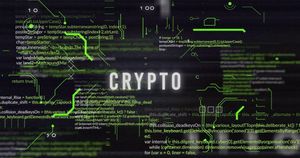ComEd Programs Help Public Schools Reduce Both Energy Use and Carbon Footprint
Downers Grove District 58 identified opportunities to reduce electricity use by 34 percent
For Downers Grove Grade School District 58, a recent assessment of 12 of its school facility buildings uncovered a plan that can reduce the district’s carbon footprint by cutting electricity use by 34 percent, while saving nearly $40,000 a year in energy costs.
The plan was the result of ComEd’s Public Schools Carbon-Free Assessment offering, which includes a free inspection of a building’s envelope and mechanical insulation to discover ways to save money on energy bills, phase out carbon emissions from the energy and transportation equipment, and create a healthier, more comfortable environment for students and staff.
“Doing an assessment like this helps us focus on long-term strategic improvements, efficiencies, and sustainability, rather than constantly putting out daily fires,” said Kevin Barto, director of building and grounds for Downers Grove District 58. “We plan to work on almost all areas of the report to increase energy efficiencies, reduce our carbon footprint, and increase building occupant satisfaction; all while saving taxpayer dollars in the process.”
Should district administrators choose to invest in solar energy panels to power its school facilities, it could save an additional $5.8 million over the lifetime of the investment, while potentially qualifying for nearly $8.6 million in state grants.
“ComEd’s commitment to the communities we serve includes helping schools reduce carbon emissions, manage energy use and save money – freeing up resources for other school priorities,” said Erica Borggren, ComEd's vice president of customer solutions. “The more resources that can be provided to schools and classrooms, the better prepared our students can be to succeed and help lift up their communities.”
The assessment by Downers Grove District 58 is one of a number of programs ComEd makes available to help public schools reduce the carbon footprint of their facilities through rebates, incentives and services that can cut schools’ cut operating costs, reduce energy use and bills, and improve the learning environment. These efforts are part of ComEd 2030, which outlines ComEd's vision for how it will advance a low-carbon energy future that benefits all of its customers and communities in northern Illinois.
Many of the programs for public schools are part of the award-winning ComEd Energy Efficiency Program which, since 2008, has saved customers more than $7.6 billion on their electric bills while removing carbon emissions from the atmosphere equal to planting more than 33 million acres of trees. Other programs ComEd offers to schools across northern Illinois include:
- Retro-Commissioning consists of a fully funded study of a facility’s existing systems to identify no-and low-cost operational improvements that can optimize the energy performance of a building. If done during the summer, schools can prepare their facilities for the upcoming heating season.
- The ComEd Energy Efficiency Program offers schools incentives and technical assistance on the tune-up or replacement of energy-efficient equipment, including lighting, HVAC and cafeteria appliances. This helps improve school-building efficiency, indoor air quality and thermal comfort, and helps schools save money for other student-related expenditures.
- To help schools take advantage of clean-energy options, ComEd offers tools and information to help public schools electrify their vehicle fleet. ComEd also offers information on solar options, as well as rebates of $250 per kilowatt to eligible public schools to help offset the out-of-pocket costs of installing qualified renewable energy generating systems, including community solar projects.
For more information on how public schools are reducing energy use and lowering their carbon footprint, visit ComEd.com/PublicSchools.
ComEd is a unit of Chicago-based Exelon Corporation (NASDAQ: EXC), a Fortune 200 energy company with approximately 10 million electricity and natural gas customers – the largest number of customers in the U.S. ComEd powers the lives of more than 4 million customers across northern Illinois, or 70 percent of the state’s population. For more information visit ComEd.com and connect with the company on Facebook, Twitter, Instagram and YouTube.
View source version on businesswire.com: https://www.businesswire.com/news/home/20230420005974/en/
Contacts
ComEd Media Relations
312-394-3500
More News
View More




Recent Quotes
View More
Quotes delayed at least 20 minutes.
By accessing this page, you agree to the Privacy Policy and Terms Of Service.